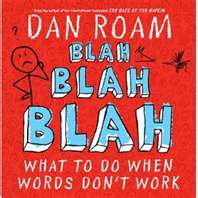
Last week at the Nonprofit Technology Conference (#12NTC), Dan Roam showed how non profits could draw their way to communications success.
He gave new meaning to “show and tell”!
In Roam’s new book, Blah, Blah, Blah, he posits that the person–or organization–who can best describe a problem is in the best position to solve it. This should give us all pause. Consider how much time we spend trying to fix things vs. making sure we’ve clearly identified the most important things to be fixed…makes you want to bust out a marker and hit the whiteboard.
Here’s my beef: Sauntering on up to a whiteboard, or whipping out a napkin with pictures on it, isn’t a practical substitute in certain instances.
Envision with me, if you will, the following: You’re at the airport waiting for your flight. You strike up a conversation with another waylayed traveler. After awhile, your new-found companion asks: “What do you do?”
There’s no whiteboard to be found and passing him or her a napkin that shows what you do would be downright awkward!
Let me be clear: the case Roam makes is that we need to get our visual and verbal minds back in balance. He’s advocating that we flex our visual mind muscles more than our verbal muscles for a spell to get them in shape. Our verbal mind has been honed, shaped and forged through years of school and testing. Our visual mind, not so much. (At no point on any standardized test are we graded on our ability to draw an answer to a problem, right?)
I agree 100% that using our visual mind to better define problems yields superior results to relying solely on words.
That doesn’t mean you stop fine-tuning your elevator pitch.
Here’s what I’d recommend: Use the visual grammar that Roam teaches in his book to define the problem you’re tackling. Then do the word+picture combo to articulate your unique approach to solving the problem. Then come up with a word only version you can use next time you’re stuck at the airport or a cocktail party or networking event or…you get the point.
Do we overuse words? Yes. Are we often sloppy with our words? Yes. Are they still useful? Yes.
If you’re intrigued by visual thinking, read Roam’s book. See how you can apply it to your mission, your work, your cause.
